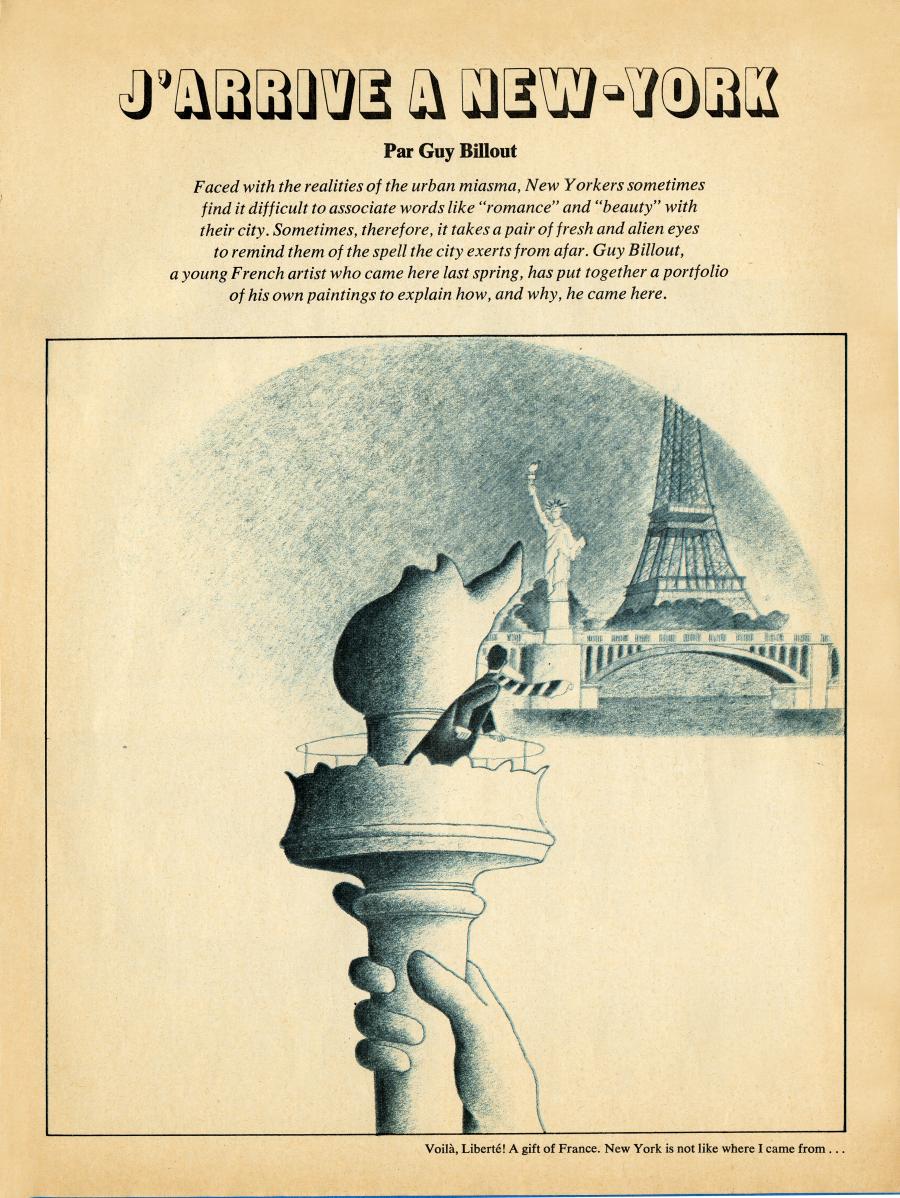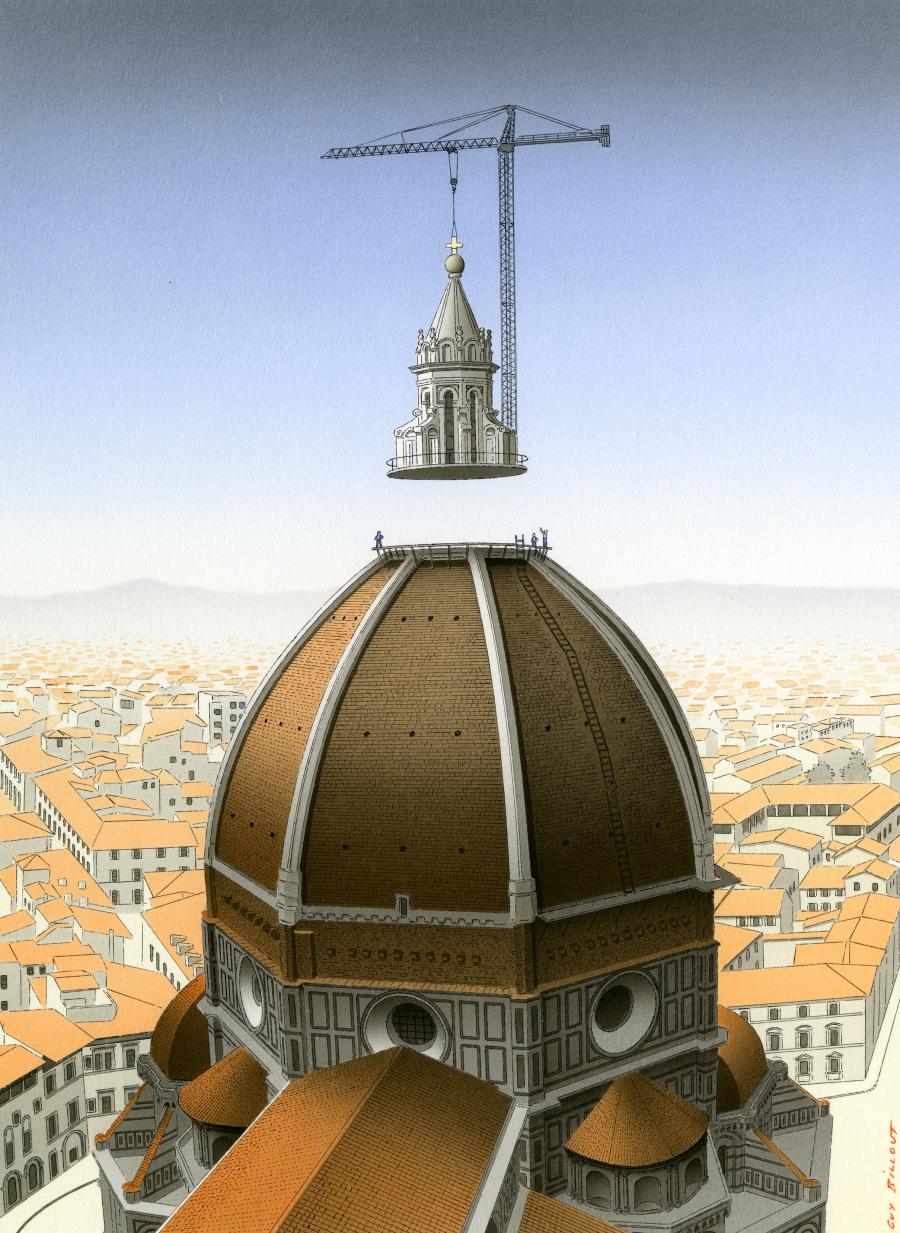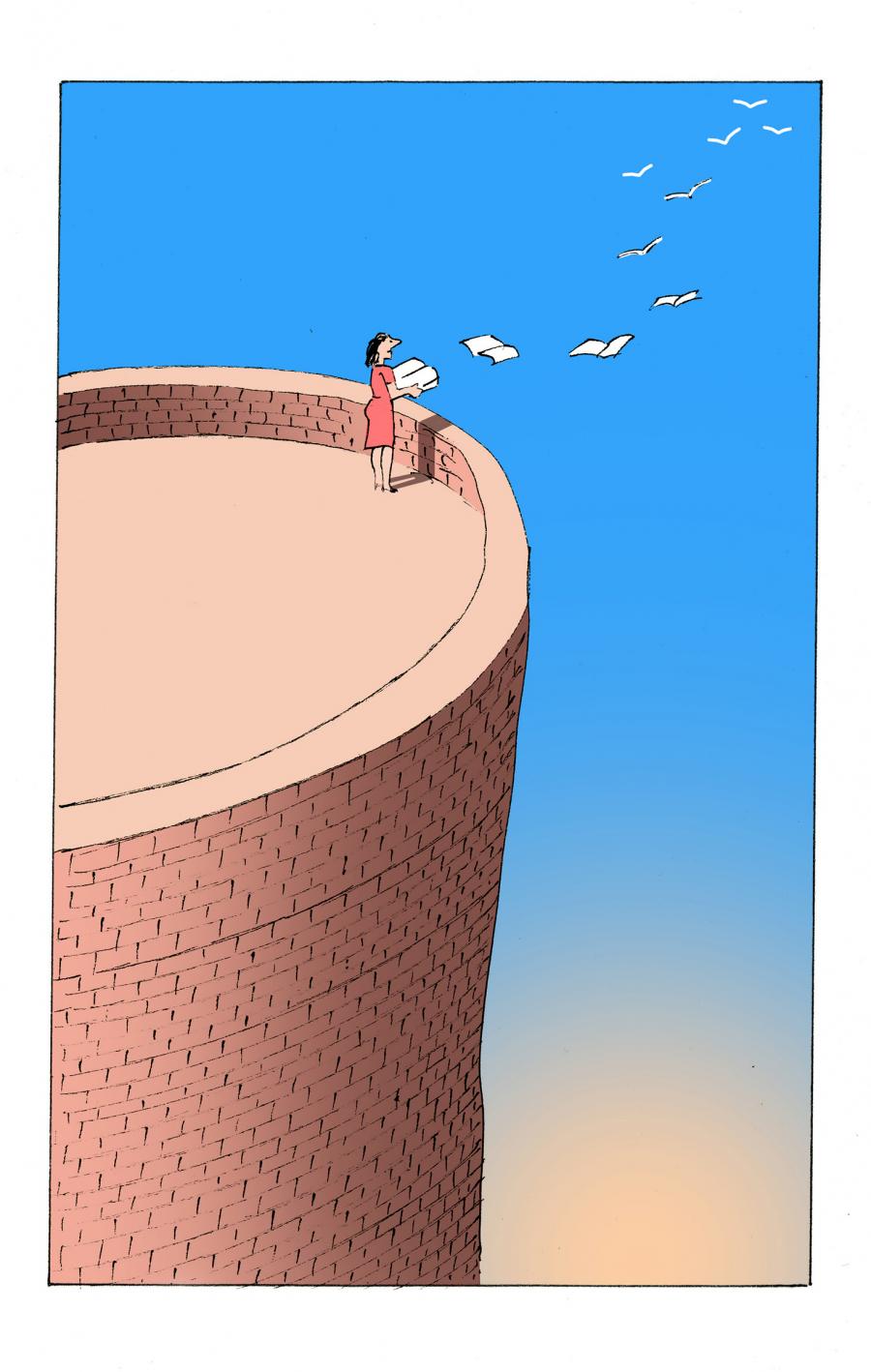Interview with Guy Billout
by ZIMMThis interview was conducted to fill in some biographical details on the otherwise well-documented career of Guy Billout. Look to the bottom of the interview for links to other articles and interviews.
Hello Guy and thanks for agreeing to this interview!
I was interested to read that in 1969, shortly after arriving in New York, Bob Ciano was one of the first art directors to give you an assignment. He was at Redbook magazine at the time. Bob became something of a traveling art director, ending up at Life, the New York Times, Esquire and many other art departments. Speaking of traveling, I think he headed up Travel & Leisure for a while as well! Did Bob continue to call you with assignments as he roamed around?
Bob Ciano was indeed the art director who commissioned me for my first assignment, when he was at Redbook magazine. It consisted of a series of 12 small illustrations for some short stories under the title "Summer Fiction Bonus" in the August 1969 issue. Bob continued to call me with assignments when he was at The New York Times, Life, Travel & Leisure, Encyclopedia Britannica, and at other places. Very early on, Bob became a good friend , and we remain in contact since he left NYC for California.
Shortly after arriving in New York in 1969, I met Milton Glaser who was the art director of New York magazine. I showed him a portfolio of 14 autobiographical illustrations, which he decided to publish. Glaser asked me do a drawing to illustrate my first impressions of the city, and that drawing was the opening page of a 5-page story (image attached). Thus it can be said that technically this was my very first commission. Both assignments were published in the month of August of that year.

I was going to ask you about that first job with Milton Glaser, so you got the jump on me! Steven Heller wrote that that first series of drawings were done using a mix of comic pictures, photographic collage, watercolor, colored pencils and ink. The use of photographic collage was surprising and I see no evidence of it in the image you uploaded from that series. Did you continue to use collage in any other work?
To demonstrate some versatility in my very first portfolio, I adopted different techniques like photographic collage, watercolor, gouache, oil painting, color pencil, and magic markers. In my first commissions, I limited myself to the use of Dr. Ph. Martin's dyes. Because of their fragility, I finally opted for Winsor & Newton watercolors, applied with an airbrush.

The bi-monthly column you did for The Atlantic Monthly was an intergral part of their editorial voice for 24 years. Not a bad run! You've also called this series your most significant works. Interestingly, there's very little, if any, backstory available on how this came to pass. Care to fill in the gaps? Do you recall the first issue you did the column for? How did this marvelous series get started in the first place?
in 1982, Judy Garlan the art director of The Atlantc Monthly offered me to create a full page in color as a regular feature every other month, with total editorial freedom. My only obligation was to send a sketch for approval.
The principle of the feature was to show some very realitic scenes, and bring into the picture a detail that "derailled" what was apparently normal. With a few exceptions, I relied on my own photographs as my main source of inspiration. These photographs were shot randomly, with no intention in mind.
Ordinary commissions always start with a theme created by another person, and the illustrator has to come up with a visual solution. It is a process that causes me a great deal of anxiety, for fear of not getting the "right" idea. By contrast, there is no equal to the kind of inspiration originating with an image without boundaries. This is why, in The Atlantic series, I always give a title after the completion of the drawing.
The first drawing of the series appeared in the February 1982 issue, and ended in the February 2006 issue.
Later on, from November 2008 until November 2012, in a 1/4 page column called "Gallery", I did 19 more illustrations with the same kind of freedom.

Your early work was all watercolor. You then transitioned to airbrush and later still, you adopted Photoshop. Your use of Photoshop brings up some questions. First off, are you scanning drawings or are you using a tablet to draw the line work directly in Photoshop? Secondly, have you used any other software to produce your work?
In my realistic approach, I make the original drawing with ink on paper, or on transparent film, when I use photography, as I did for "Deus Ex Machina".
In the looser style, I draw directly on paper with a pencil, or with a pen, without corrections. The crudest, the better, as shown below.
In both styles, I scan the drawing, coloring it with Photoshop.
Photoshop is the only software I am using.
I am interested though in exploring digital imagery the way David Hockney does.

You've taught at Parsons School of Design since 1985. That's an amazing accomplishment! Care to list some of the illustrators who've passed through those halls and perhaps benefited from your heroic contribution to art education?
I know when a student makes progress during class; but I can only speculate on my eventual influence when she enters the real world.
I remain in touch with a few former students, who have managed to survive as illustrators. No small feat !
Interestingly enough, one of the hardest things to document are awards received by illustrators. In my research, I was easily able to find your Hamilton King Award from 1989, as well as the Silver medal from the Society of Illustrators for The Frog Who Wanted to See the Sea in 2007.
Would you mind listing the awards you've received over the years? Of particular interest would be those received from the Society of Illustrators.
From the Society of Illustrators:
2 gold medals in 1974 ( I have the medals and the printed awards, but they don't provide the description of the artworks, nor the names of the clients, and of the art directors )
2 silver medals in the annuals #26, and #27 ( since I don't have copies of these annuals, I have no details about the artwork, clients and art directors ).
1 gold medal in the annual #30, for a piece entitled "Prop" for the Atlantic Monthly Magazine in the December 1986 issue. Art Director: Judy Garlan.
2007 Original Art Award ( children's books only ), silver medal for "The Frog Who Wanted to See the Sea", Client: Creative Editions, Art Director: Rita Marshall. This book was selected by The New York Times, for their list of the 10 best illustrated children's books that year.
Certificates of Merit in the annuals #31, #32, #35, #36, #41, #43, #44, #48, #49
1989 Hamilton King Award
Hall of Fame in 2016
The New York Times list of the 10 best illustrated children's books:
1973: "Number 24", Harlin Quist, publisher
1979: "By Camel or by Car" a look at transportation, Prentice-Hall Inc.
1981: "Stone and Steel" a look at engineering, Prentice-Hall Inc.
1982: "Squid and Spider", a look at the animal kingdom, Prentice-Hall Inc.
2007: "The Frog Who Wanted to See the Sea". Creative Editions
Other Resources on Guy Billout
Guy Billout biography at Wikipedia
In 2015 Robert Newman at CA dropped his long-used list of questions in Billout's lap and the answers are most rewarding indeed..
A 2011 interview conducted by David Paccia
Véronique Vienne wrote a terrific Hall of Fame Induction article for the Society of Illustrators in 2016
